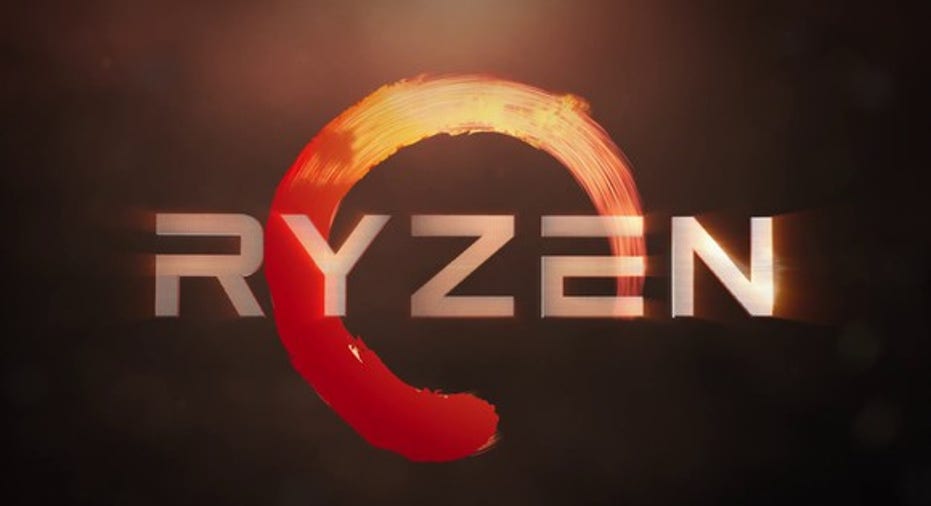AMD's Ryzen 5 May Not Be Disruptive Enough

After launching the high-end Ryzen 7 line of PC CPUs in March to somewhat mixed reviews, Advanced Micro Devices (NASDAQ: AMD)is now taking a crack at the mainstream portion of the market. Ryzen 5, comprised of four CPUs featuring either four or six cores, is aimed at Intel's (NASDAQ: INTC) Core i5 family of chips. Priced between $169 and $249, Ryzen 5 offers more cores and threads than Intel's comparable chips. But the same trade-off that made Ryzen 7 a mixed bag persists: Single-threaded performance is a weakness for Ryzen, and AMD's pricing may not be aggressive enough to overcome that issue.
A look at Ryzen 5
The highest-end Ryzen 5 chip, the 1600X, is priced at $249, offering six cores and 12 threads. The 1600X is essentially the Ryzen 1800X with two cores and $150 lopped off, making it a good budget option for those who use applications that can take advantage of that many threads. Like the 1800X, though, the 1600X falls short when single-threaded performance is important.
Image source: AMD.
The 1600 also has six cores and 12 threads, but it comes with a lower clock speed and a $219 price tag. The 1500X and 1400 both come with four cores and eight threads priced at $189 and $169, respectively, with the 1400 having a lower clock speed and half as much L3 cache as the rest of the Ryzen 5 lineup.
The competition is Intel's Core i5 line of chips. All of Intel i5 chips come with at most four cores, and those quad-core chips don't support hyperthreading, meaning that the number of threads is equal to the number of cores. All the Ryzen 5 chips have a major advantage when it comes to multithreaded performance due to this discrepancy -- the same story that played out with Ryzen 7.
Good at some things, not so good at others
Like Ryzen 7, Ryzen 5 is at an inherent disadvantage when it comes to single-threaded performance. In its review of Ryzen 5, Anandtechputs that disadvantage at about 10% to 15%. The upside is that the two higher-end Ryzen 5 chips have 50% more cores and triple the threads compared to Intel's i5 chips.
In situations where single-threaded performance matters greatly, like opening PDF documents and in games that don't make great use of more than a few cores, Ryzen 5 gets trounced by Intel's Core i5 chips. The i5-7600 is 16.7% faster at opening a PDF document than the 1600X, according to Anandtech's review, a difference that will be noticeable to users.
Ryzen 5 falls well behind in some games. Anandtech's test of Rise of the Tomb Raider has the 1600X with a 28% lower frame rate at a 1080p resolution. That gap disappears at a 4K resolution, but that's only because the GPU becomes the bottleneck.
Ryzen 5 fares far better in other games, though, thanks to its core count advantage. Anandtech's Civilization 6 benchmark has the 1600X well ahead of the i5-7600 at both 1080p and 4K resolutions. When it comes to gaming, Ryzen 5 seems to be more competitive than Ryzen 7, which was beat by cheaper Intel chips in most gaming benchmarks.
Ryzen 5 shines in applications that can make full use of its cores. Applications like compressing files, encoding video, and 3D rendering all benefit greatly from a higher core count. Anandtech's 7-Zip compression benchmark, for example, has the 1600X scoring nearly 90% higher than the i5-7600. Ryzen 5 is the runaway winner for these types of applications.
Pricing might be a problem
The 1600X priced at $249 is a no-brainer for users that benefit from more cores. But as a mainstream gaming CPU, the 1600X is more of a mixed bag. Intel's i5-7600 is priced around $213, and the unlocked i5-7600K sells for around $242. The cheaper Intel chips outperform the 1600X in quite a few games, although they get beat in some CPU-intensive titles.
AMD's pricing isn't very disruptive, especially considering that Ryzen 5 is at a disadvantage when it comes to everyday tasks that benefit from better single-threaded performance. The 1600X is certainly a viable alternative to Intel's chips, but it comes with a lot of trade-offs and a higher price. If AMD's goal is to win back considerable market share from Intel, it will likely need to do better than this.
10 stocks we like better than Advanced Micro DevicesWhen investing geniuses David and Tom Gardner have a stock tip, it can pay to listen. After all, the newsletter they have run for over a decade, Motley Fool Stock Advisor, has tripled the market.*
David and Tom just revealed what they believe are the 10 best stocks for investors to buy right now... and Advanced Micro Devices wasn't one of them! That's right -- they think these 10 stocks are even better buys.
Click here to learn about these picks!
*Stock Advisor returns as of April 3, 2017
Timothy Green has no position in any stocks mentioned. The Motley Fool recommends Intel. The Motley Fool has a disclosure policy.